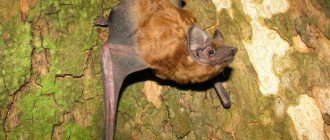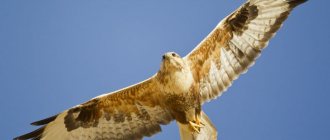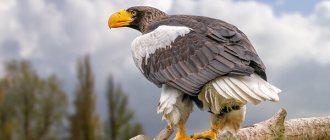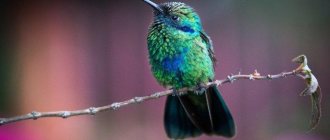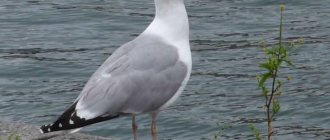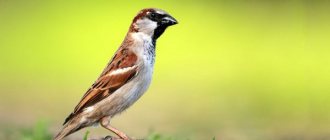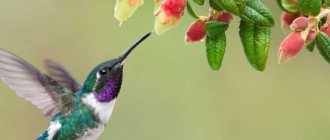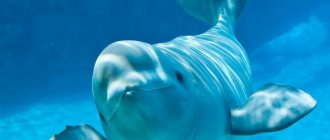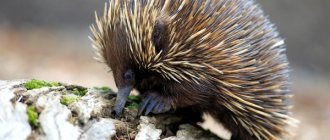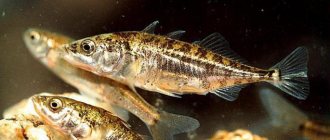Loons are waterfowl that are slightly smaller in size than the common goose. The peculiarity is that their paws are completely unsuited to moving on the ground. When getting ashore, the bird is forced to practically crawl on its belly along the surface, but almost no traces of this method of movement remain. Therefore, the entire life of loons is spent on the water - mating games, feeding, sleeping and resting. There are several species of loons - red-throated, white-necked, white-billed, but the most common of these is the black-throated.
Black-throated loon
The appearance of males and females is almost the same - the abdomen is covered with white feathers, and on top there is grayish-brown or black plumage with white highlights. Individuals can be distinguished by their neck pattern - each one has an individual pattern.
The pattern is not visible only during the wintering period, when the entire color of the bird becomes more monotonous. Loons differ from geese and ducks in their flight style - they stoop slightly and bend their necks downwards. The birds' wings are relatively small, opposite the span of the same ducks, and their legs protrude back - they are often confused with the tail. The bird's three front toes are connected by a membrane. The black-throated loon has a sonorous voice - in its overtones you can hear both screams and moans. The black-throated individual's cry is more similar to the croaking of a crow. Unfortunately, the loon is at the stage of extinction, so the only chance to save the species is the Red Book. The sounds of the black-throated loon during the mating season sound like “ga-ga-ga-rra”, which gives it its name.
Habitat
It should be immediately noted that it is inappropriate to confuse the loon with the eider. Despite the fact that the names of the birds are very similar, they belong to different orders. And birds were hunted for completely different needs - eiders were valued for their fluff, and loons were valued for their “loon necks” for ladies’ hats.
The bird weighs about three kilograms, and the length of its legs is also amazing - at least 10.5 centimeters. The European black-throated loon settles in large lakes and becomes attached to its habitat for many years. A bird's nest most often looks like this - a trampled area at the very edge of the water. Sometimes the loon lays its eggs in a pile of dead vegetation, which it first lays out over an area about half a meter wide. But provided that the nest is located in close proximity to water - so that you do not have to get to it on the ground.
Reproduction
Birds are monogamous, meaning they prefer one partner for life. The pair stays together during winter migration and on wintering grounds.
Black-throated loons mate on banks near water and this often occurs immediately after arriving at the breeding site. This species exhibits high stability and primarily uses the same nesting site for each breeding season.
Loons occupying the southern regions begin the mating season in May, while the breeding season in the northern regions is determined by the beginning of spring.
Birds build nests of several variations. The first type of nests is found in deep oligotrophic lakes, in which the shores are clearly defined and relatively dry.
Black-throated loons place nests on the banks at the very edge of the water so that they can go to land or leave the nest for water if danger threatens. A special hole leads to the nest, thanks to which the bird easily gets into the water.
Both future parents build the nests, but the male will be the leader. The materials used are peat moss, sedge, and algae from the depths of the reservoir. The nest is a compacted plexus of the above materials. There is a tray at the top of the nest.
The diameter of the nest is 35-35 cm, the tray is about 20 cm, its depth is about 5 cm.
The second type of nest is rare. Birds build it in shallow water, the depth of which is no more than 50 cm. The shape of the nest is similar to a truncated cone, and stems, roots and leaves of plants are used as materials. The base of such a cone is immersed in water and reaches the bottom or is kept floating thanks to neighboring aquatic plants and algae. The nesting lining is always wet.
The third type of nests is built by the species on large lakes, which are overgrown with reeds. The nests of this species are similar to the first ones, but are considered more primitive.
Upon completion of nest construction, the female lays 1 to 3 eggs. The eggs are olive brown with dark brown spots. Incubation lasts from 27 to 29 days.
Loon offspring
A bird does not have too many eggs in its clutch - usually one or two. The color of the eggs camouflages them well from predators - the olive-brown eggs practically blend in with the coastal vegetation. They reach almost ten centimeters in length, and each of them weighs about 105 grams.
It is by the clutch that you can determine whose nest it is - a red-throated loon or a black-throated loon. The first one has much smaller eggs. Both partners incubate the clutch - they replace each other, letting their mate rest on the water, sleep and eat. The incubation period lasts about a month - the chick can hatch after 25 or 30 days. The babies remain in the nest for a record short time - no more than two days. Then the adults begin to accustom the chicks to water. The first exit looks like this - the chicks climb onto the back of an adult bird and descend into the water. Very soon you can see the babies swimming independently between their two parents. Carefully sheltering them from possible misfortunes.
Voice
The voice of the black-throated loon is very diverse and difficult to convey in words. In flight, you can most often hear a hoarse, gradually accelerating “ga...ga...ga...ga...garrraaa” or a single abrupt “gak”; on the water - a very loud but melodious repeated “ku-ku-ee”, which acts as an acoustic marking of the nest and feeding area. During the pre-breeding and nesting periods, birds often perform a “unisonal duet”, consisting of a series of hoarse, piercing screams built in different tones. Sometimes this duet is performed by a group of loons, which is especially typical during the prebreeding period. A frightened bird, when diving, often emits a short, abrupt cry “ouch”. In addition to the mentioned calls, black-throated loons make a significant number of other sounds, often reminiscent of the barking and howling of a dog, croaking, or even the voice of a person. In general, the vocalizations of black-throated loons are extremely rich and insufficiently studied. In summer and especially in spring, black-throated loons are very noisy, while on migration and during wintering they are extremely silent.
Lifestyle
Loons are excellent swimmers. It costs nothing for a bird to dive to a depth of 21 meters, remaining under water for about two minutes. In this case, the bird folds its wings on its back, and the covert feathers protect them from getting wet. The black-throated loon accelerates against the wind for a long time before breaking away from the surface of the water. The bird's lifespan is about 20 years. The principle of swan fidelity applies here - having come together once in a lifetime, couples do not break up until their death. Birds go to warm seas for the winter. Individuals of the first year of life remain there. In the spring, loons fly back, but very late, when the water has already become clear.
Interesting changes occur with birds in winter. In the midst of frosty days, loons begin to lose their flight feathers, which deprives them of the ability to fly for at least 1.5 months.
Interesting Facts
- An interesting fact is that the black-throated loon is a territorial species when breeding. Birds aggressively defend their territory from intruders. The Madman will display threatening positions to warn enemies. This tendency is shared by both sexes and men fight to the death. Birds protect them with their wings.
- The black-throated loon has an interesting voice and makes a variety of sounds. The low sound is weak and similar to a human hum. It is published by both men and women.
- Yodel, the "kuik-kukuik-kukuik" sound, is the loudest vocalization made by a male alone. Even in adverse conditions, this call can be heard at a distance of more than 10 km. Both low tones and yodeling are recognized as contact cues. The difference is that the weak call is a contact call, while yodeling is a territorial call for the male preparing to defend his territory.
- Like most birds, grebes perceive their environment through visual, auditory, tactile and chemical stimuli.
- Adults do not have many natural predators. The main enemy of the species is bald eagles. The latter attack unsuspecting pregnant parents. Young chicks are susceptible to attack by fish, bald eagles and herring gulls.
- There are several animals that hunt eggs. These include the raccoon, raven and fox. Eating of loon eggs occurs when the adult leaves the nest due to human intervention or the approach of an enemy. At this time, eggs left unattended quickly attract nearby predators.
- This species serves as both prey and predator in ecosystems. Birds control populations of fish, crustaceans and aquatic insects.
- Loons host parasites such as worms and roundworms.
- The Inuit are the Inuit people who inhabit parts of North America and Alaska, all the way to eastern Canada. These people eat the eggs of arctic grebes.
- Birds catch fish at a depth of six meters, but remain under water for no more than a minute.
- On the ground, grebes are clumsy and have difficulty covering long distances.
- According to ancient Slavic beliefs, the devil himself created the madman’s palace.
- Our ancestors considered this species a sacred bird. American Indian cultures still believe that the spirit of the dead speaks through madmen and that they are their reincarnation as humans.
- The name of the loon golanera in Latin is Gavia arctica. The word "gavia" refers to seabirds that have not yet been identified with any known group of birds. And the Greek word “Arctic” comes from “arktikos”, which means northern.
- There are five types of grebes: red-breasted - G star-shaped; golanera - G arctica; white-throated - G pacifica; black beak, dark or polar beak - G immer; white beak - G adamsii.
- During the colder months, the birds' eyes turn a dull gray. But in spring and summer they take on a bright red hue. Scientists don't know for sure why this happens. But there are suggestions that it may have something to do with attracting partners or helping nature with underwater surveillance.
- Like all birds, grebes have no teeth. This causes them to swallow food whole or in large chunks. To ease digestion, madmen will search for and eat small pebbles. Once in the stomach, tiny pebbles crush freshly prepared food, which is then more efficiently processed by enzymes.
- At first glance, grebes look like ducks, but appearances can be deceiving. Research shows that the birds are more closely related to penguins and albatrosses than to ducks or geese.
- If the current in a body of water suddenly changes, loons can make a sharp turn that even Olympic swimmers will envy. The birds extend one leg to the side like a swing brake and kick with the opposite leg, turning 180 degrees in a split second.
- Grebes are an excellent indicator of water quality as they require crystal clear lakes. This is because clear water makes it easier to watch the numerous populations of small fish foraging.
Loon hunting
The black-throated loon is of particular value to humans. The peoples of the Far North use poultry meat as food, and besides, it is not at all difficult to catch a loon. Often the birds themselves get tangled in fishing nets, from where it is not difficult to get them out. Once upon a time, local tailors sewed exclusive ladies' hats from loon skins (white belly and chest), but today this craft is no longer relevant. The black-throated loon does not like being close to people - the bird dies from the dirt left behind by people, and is often hunted for entertainment. That's why some countries even have their own loon festival. When birds arrive from warm seas, people meet them, provide them with a snack and organize normal rest conditions. We learned what a black-throated loon looks like. A brief description will make it clear how you can distinguish it afloat, for example, from an ordinary duck.
Loon on the water
When a bird swims, only a low-browed head, a small part of the back and a slightly arched neck are visible on the surface - the landing of this bird is quite low. If the bird begins to worry, it dives even deeper into the water, eventually leaving only its head and a small section of its neck above the water surface.
When very frightened, she simply dives under the water, waiting there for quite a long time until the danger passes. The black-throated loon moves easily under water - like a released cork, it can cover a distance of 500 meters in one minute. This saves her from numerous hunters who confuse the bird with a duck and wait for it to emerge in the same place.
Features of the subspecies
The main feature of the black-throated duck is its voice. It is impossible to describe it, much less repeat it. These birds have several tones of cry, which indicate:
- its territory and fishing basin;
- the place where the nest with offspring is located;
- danger;
- belonging to a pack.
It can be a very squeaky cry, similar to a turtle dove, but with a sharp break, or a low roar, like a turtle. Due to such diversity, inexperienced residents of lakes where ducks roam do not always know who they are neighboring with. That is why even the actual population size is so difficult to determine.
A little more about the black-throated loon
Unfortunately, there are fewer and fewer individuals of this species left. Lakes are drying up, nature is being polluted by human hands - all this contributes to the fact that birds have to look for new habitats, and this is a constant risk to which the black-throated loon is exposed. The Red Book prohibits hunting these birds, but this does little to stop people. According to the latest data, the number of birds has decreased many times, in some areas they have disappeared forever. Nowadays, black-throated loons can be seen quite rarely - the bird tries to settle in remote areas, away from human sight, mainly on large forest lakes. For example, in the Krasnodar Territory this bird is on a special register - in total there are about 500 individuals, which is a record small number for the most common species of loons.
Links[edit]
Quotes [edit]
- ^ a b c d BirdLife International (2012). "Gavia Arctica". IUCN Red List of Threatened Species
.
2012
. Retrieved November 26, 2013. Old form URL - Linnaeus, Karl (1758). Systema naturae per regna tria naturae, secondary classes, ordinal, genera, species, cum characteribus, differentials, synonyms, loci. Tomus I. Editio decima, transformed
(in Latin). Holmiae [Stockholm]: Laurentii Salvii. - Allen, J. A. (1897). "The proper generic name for loons." General remarks. Auk
.
14
(3): 312. DOI: 10.2307/4068646. JSTOR 4068646. - Johnsgard, Paul A. (1987). Diving with the Birds of North America. University of Nevada - Lincoln. ISBN 978-0-8032-2566-4.
- Jobling, James A (2010). Helm's Dictionary of Scientific Names for Birds. London: Christopher Helm. paragraph 53. ISBN 978-1-4081-2501-4.
- Jobling, James A. del Hoyo, Josep; Elliott, Andrew; Sargatal, Jordi; Christie, David A.; de Juana, Eduardo (ed.). "Key to Scientific Names in Ornithology". Directory of the World's Living Birds
. Barcelona: Lynx Editions. Retrieved August 2, 2022. - ^ abcdefghijklmnopq Carboneras, C.; Garcia, E. F. J. (2017). del Hoyo, Josep; Elliott, Andrew; Sargatal, Jordi; Christie, David A.; de Juana, Eduardo (ed.). "Arctic loon (Gavia arctica)". Directory of the World's Living Birds
. Barcelona: Lynx Editions. Retrieved May 28, 2022. - Dwight, Jonathan (1918). "A new species of loon ( Gavia viridigularis
) from northeastern Siberia."
Auk
.
35
(2): 196–199. DOI: 10.2307/4072850. ISSN 0004-8038. JSTOR 4072850. - ^ ab Bent, A. C. (1919). "Geographical Variation of Black-throated Loons". Auk
.
36
(2):238–242. DOI: 10.2307/4073044. ISSN 0004-8038. JSTOR 4073044. - ^ ab Monroe Jr., Bert L.; Banks, Richard S.; Fitzpatrick, John W.; Howell, Thomas R.; Johnson, Ned K.; Ouellet, Henri; Remsen, James V.; Storer, Robert W. (1985). "The Thirty-Fifth Addition to the American Ornithologists' Union List of North American Birds." Auk
.
102
(3):680–686. DOI: 10.1093/AUK/102.3.680. - ^ ab Sprengelmeyer, Quentin D. (2014). Phylogenetic reassessment of the genus
Gavia
(Aves: Gaviiformes) using next generation sequencing
(MSc). Northern Michigan University. - Kadosaki, Masaaki (1975). "Preliminary study of the structure of the pulmonary-air sac system of loons". Japanese Journal of Ornithology
.
23
(95–96): 1–6. DOI: 10.3838/jjo1915.23.1. - ^ ab Ted Floyd (May 27, 2008). Smithsonian Field Guide to the Birds of North America. HarperCollins. paragraph 74. ISBN 978-0-06-112040-4.
- ^ abcd Hauber, Mark E. (August 1, 2014). The Book of Eggs: A Guide to the Life-Size Eggs of Six Hundred Species of Birds. Chicago: University of Chicago Press. paragraph 53. ISBN 978-0-226-05781-1.
- ^ abc Hake, Mikael; Dahlgren, Thomas; Ohlund, Matti; Lindberg, Peter; Ericsson, Mats O.G. "The influence of water level fluctuations on the breeding success of the black-throated diver Gavia arctica
in southwestern Sweden."
Ornis Fennica
.
82
(1): 1–12. ISSN 0030-5685. - ^ abcd Mudge, GP; Talbot, T.R. (1992). "Breeding biology and causes of nest failure in Scottish black-throated divers Gavia arctica
."
Ibis
.
135
(2):113–120. DOI: 10.1111/j.1474-919X.1993.tb02822.x. ISSN 0019-1019. - Pielou, E.C. (31 July 2012). A Naturalist's Guide to the Arctic. University of Chicago Press. item 203. ISBN. 978-0-226-14867-0.
- Peterson, Roger Tory; Mountfort, Guy; Hall, Washington (December 15, 2001). A Field Guide to the Birds of Britain and Europe. Houghton Mifflin Harcourt. clause 12. ISBN 978-0-618-16675-6.
- ^ abcd Petersen, Margaret R. (1979). "Nest ecology of Arctic loons". Wilson's Bulletin
.
91
(4):608–617. - ^ abcd Bergman, Robert D.; Derksen, Dirk W. (1977). "Observations of Arctic and Red-throated Loons at Storkersen Point, Alaska." Arctic
.
30
(1): 41–51. DOI: 10.14430/arctic2682. - ^ B s d y Sjolander, Sverre (1978). "Reproductive behavior of the black-throated diver Gavia arctica
".
Ornis Scandinavica
.
9
(1):51–65. DOI: 10.2307/3676139. ISSN 0030-5693. JSTOR 3676139. - Hancock, Mark (2000). "Artificial floating nesting islands for black-throated divers Gavia arctica in Scotland: design, use and impact on breeding success". Bird Research
.
47
(2): 165–175. DOI: 10.1080/00063650009461172. - Jump up
↑ Eriksson, Mats OG (1986).
"Reproduction of the black-throated diver Gavia arctica
in relation to fish density in oligotrophic lakes in southwestern Sweden."
Ornis Scandinavica
.
17
(3): 245–248. DOI: 10.2307/3676833. ISSN 0030-5693. JSTOR 3676833. - Amundsen, Per-Arn; Lafferty, Kevin D.; Knudsen, Runa; Primicerio, Raul; Klemetsen, Anders; Kouris, Armand M. (2009). "Food web topology and parasites in the pelagic zone of a subarctic lake." Journal of Animal Ecology
.
78
(3):563–572. DOI: 10.1111/j.1365-2656.2008.01518.x. ISSN 0021-8790. PMID 19175443. - Baltz, D. M.; Morejon, G. Victor (1977). "Feeding habits and niche overlap of seabirds wintering in Monterey Bay, California." Auk
.
94
(3):526–543. - De Graaf, Richard M.; Tillman, Nancy J.; Anderson, Stanley H. (1985). "Guild Collectors of North American Birds". Environmental Management
.
9
(6): 493–536. Bibcode: 1985EnMan…9..493D. DOI: 10.1007/BF01867324. ISSN 0364-152X. S2CID 85418857. - ^ ab Bundy, Graham (2009). "Observations of the breeding and feeding of the black-throated diver". Bird Research
.
26
(1): 33–36. DOI: 10.1080/00063657909476614. ISSN 0006-3657. - Russell, Robert W. (2002). Rodewald, P.G. (ed.). "Arctic loon (Gavia arctica)". Birds of North America
. Retrieved July 11, 2022. - ^ ab Jackson, Digger B. (2002). "Lake-to-lake differences in the diet and behavior of black-throated divers Gavia arctica
bred in Scotland."
Ibis
.
145
(1):30–44. DOI: 10.1046/j.1474-919X.2003.00119.x. ISSN 0019-1019. - Fastzkie, Jean Sprinkle; Critics, John L. (1977). " Redescription of Eustrongylides tubifex
(Nitzsch 1819) Jagerskiold 1909 (Nematoda: Dioctophymatidae) from mallards (
Anas platyrhynchos
)".
Journal of Parasitology
.
63
(4):707–12. DOI: 10.2307/3279578. ISSN 0022-3395. JSTOR 3279578. PMID 886407. - "Protected Species of Migratory Birds Act (List 10.13)". US Fish and Wildlife Service. Retrieved July 13, 2017.
- "Kinds" . aewa.org
. Agreement on the Conservation of Afro-Eurasian Migratory Waterbirds.
Bibliography[edit]
- Peter (1988). Seabirds
(2nd ed.). London: Christopher Helm. ISBN 978-0-7470-1410-2. - A Field Guide to the Birds of North America
. Washington, DC: National Geographic Society. 2002. ISBN 978-0-7922-6877-2.
